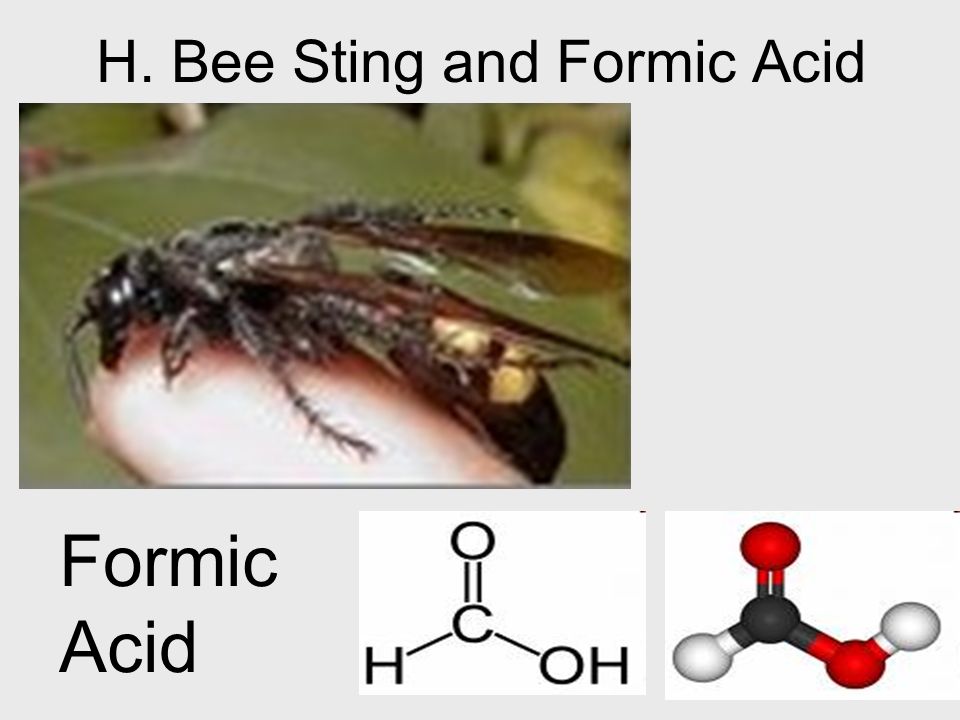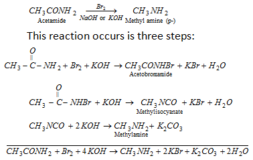formic acid

source : slideplayer
Chemical properties of formic acid :
HCOOH is the strongest acid among all the members of homologous series.
1. Acidic Nature:
a) It is monobasic acid. Its acidic properties are due to its ionization in aqueous solution.
HCOOH —> HCOO– + H+
b) It reacts with metal carbonates and bicarbonates and evolve CO2.
HCOOH + NaHCO3 ——-> HCOONa +H2O + CO2
2 HCOOH + Na2CO3 ——-> 2 HCOONa + 2 H2O + CO2
c) It reacts with alkalies to form corresponding salts.
HCOOH + NaOH ——-> HCOONa +H2O
HCOOH +NH4OH ——-> HCOONH4 +H2O
d) Highly electropositive metals evolve H2 when react with HCOOH.
2 HCOOH + 2 Na ——–> 2 HCOONa + H2
e) It combines with alcohol to form ester.
HCOOH + CH3OH —–> HCOOCH3 (Methyl formate) + H2O
f) It reacts with PCl5 or SOCl2 to give formyl chloride which is not a stable compound. It decomposes into Hydrochloric acid & Carbon monoxide.
HCOOH + PCl5 ——-> HCOCl + POCl3 +HCl
HCOCl ——> HCl+ CO
HCOOH + SOCl2 ——-> HCOCl + SO2+HCl
HCOCl ——> HCl+ CO
2. Action of Heat :
when heated above 160 0 C, it decomposes to give Carbon dioxide and Hydrogen.
HCOOH ——-> CO2+ H2
3. Dehydration :
when formic acid is warmed with concentrated H2SO4. It decomposes to give Carbon monoxide & water.
HCOOH ——–> CO + H2O
4. Action of heat on formates :
a) When Na-formate is heated to 36O 0C, it decomposes to form Sodium oxalate and Hydrogen .
2 HCOONa ——> (COONa)2 (sodium oxalate) + H2
b) When sodium-formate is heated with soda lime then Hydrogen gas is formed.
HCOONa +NaOH (CaO) ——-> H2 + Na2CO3
c) Formaldehyde is formed when dry Ca-formate is heated.

d) Formamide is formed when ammonia formate is heated.
HCOONH4 ——-> HCONH2 + H2O
5) Reducing Properties:
Like aldehydes, formic acid behaves as reducing agent it is oxidized to carbonic acid (unstable acid ), which decomposes into Carbon dioxide and water.
HCOOH——> H2CO3 (unstable acid) ——> CO2 +H2O
a) It decolorizes acidified KMnO4 solution :
2KMnO4 + 3H2SO4 ——> K2SO4 + 2MnSO4 + 3H2O + 5(O)
HCOOH + O ——–> CO2 + H2O ]x 5
5 HCOOH + 2KMnO4 + 3H2SO4 ——> K2SO4 + 2MnSO4 + 8H2O +5CO2
b) It reduces mercuric chloride ( HgCl2 ) to white precipitate of mercurous chloride ( Hg2Cl2) and then grey precipitate of mercury (Hg) :
HCOOH + 2HgCl2 ——-> Hg2Cl2 + CO2 + 2HCl
2 HCOOH +Hg2Cl2 ——> 2Hg + 2CO2 + 2HCl
c) It reduces ammonical AgNO3 (Tollen’s reagent)
HCOOH + Ag2O ——> CO2 + H2O + 2Ag
d) It reduces Fehling solution i.e gives red precipitate of cuprous oxide (Cu2O) :
HCOOH + 2CuO —-> Cu2O( red ppt of cuprous oxide) + H2O+ CO2







